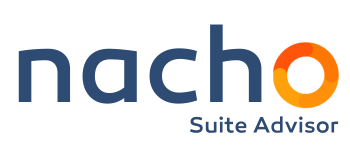NetSuite Fixed Assets Management: Tracking and Depreciation Strategies
![]()
In today’s fast-paced business environment, effective management of fixed assets is crucial for organizations aiming to optimize their financial performance. NetSuite, a leading cloud-based Enterprise Resource Planning (ERP) solution, offers robust tools for fixed assets management, enabling businesses to track, manage, and depreciate their assets efficiently. This article delves into the strategies for tracking and depreciation within NetSuite, providing insights and best practices for organizations looking to enhance their asset management processes.
Understanding Fixed Assets Management in NetSuite
Fixed assets are long-term tangible assets that a company owns and uses in its operations to generate income. These can include machinery, buildings, vehicles, and equipment. Proper management of these assets is essential for accurate financial reporting and compliance with accounting standards.
NetSuite’s Fixed Assets Management module allows businesses to:
- Track asset acquisition and disposal
- Calculate depreciation automatically
- Generate reports for financial analysis
- Ensure compliance with accounting regulations
Effective Tracking of Fixed Assets
Tracking fixed assets accurately is vital for maintaining an up-to-date inventory and ensuring that financial records reflect the true value of the company’s assets. NetSuite provides several features to facilitate effective tracking:
- Asset Tagging: Each asset can be assigned a unique identifier, making it easier to track its location and status.
- Real-Time Updates: Changes in asset status, such as acquisitions or disposals, can be updated in real-time, ensuring that records are always current.
- Integration with Other Modules: NetSuite integrates fixed asset management with other modules like inventory and procurement, providing a holistic view of asset utilization.
For example, a manufacturing company using NetSuite can track its machinery from acquisition through to disposal, ensuring that all financial implications are recorded accurately. This level of tracking helps in making informed decisions regarding asset utilization and replacement.
Depreciation Strategies in NetSuite
Depreciation is the process of allocating the cost of a tangible asset over its useful life. NetSuite simplifies this process with automated calculations and customizable depreciation methods. Here are some common strategies:
- Straight-Line Depreciation: This method spreads the cost evenly over the asset’s useful life, making it simple and predictable.
- Declining Balance Method: This approach accelerates depreciation, allowing for higher deductions in the earlier years of an asset’s life.
- Units of Production Method: Depreciation is based on the asset’s usage, making it suitable for assets whose wear and tear is closely tied to production levels.
NetSuite allows businesses to select the most appropriate method based on their financial strategy and asset type. For instance, a tech company may prefer the declining balance method for its rapidly depreciating equipment, while a real estate firm might opt for straight-line depreciation for its properties.
Case Study: A Real-World Application
Consider a mid-sized construction firm that implemented NetSuite’s Fixed Assets Management module. Before using NetSuite, the company struggled with manual tracking of its heavy machinery, leading to discrepancies in asset valuation and depreciation calculations. After integrating NetSuite, the firm was able to:
- Reduce asset tracking time by 50%
- Improve accuracy in financial reporting
- Enhance compliance with tax regulations
This case illustrates how effective fixed asset management can lead to significant operational improvements and financial benefits.
Conclusion
In conclusion, effective fixed assets management is essential for any organization looking to optimize its financial performance. NetSuite provides powerful tools for tracking and depreciating assets, allowing businesses to maintain accurate records and make informed decisions. By leveraging automated tracking, customizable depreciation methods, and real-time updates, organizations can enhance their asset management processes, leading to improved financial outcomes and compliance. As businesses continue to evolve, adopting robust asset management strategies will be key to sustaining growth and profitability.
“`
